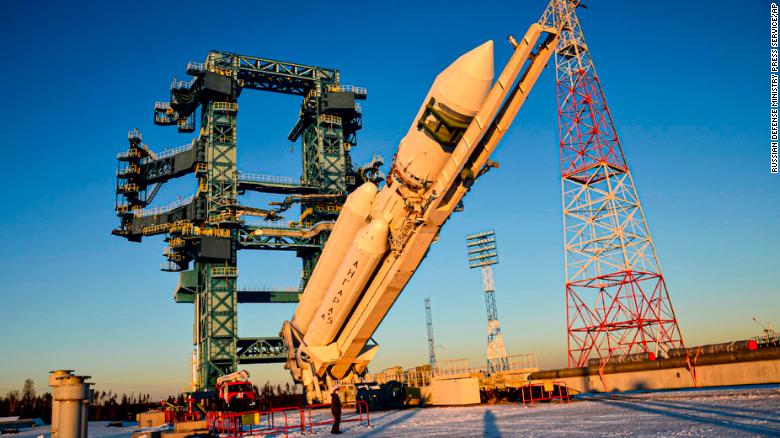(CNN) – Astronauts are monitoring a portion of a Russian rocket that will make an uncontrolled return to Earth’s atmosphere in the next 24 hours.
The Ankara-A5 heavy-lift rocket was launched on Monday, December 27, from the Plechetsk space station in the northwestern Arkhangelsk region of Russia. Tested on a new upper-level launch of a rocket called the Percy Booster. According to the state news agency TAS.
“It’s safe to say it’s going to fall in the next 24 hours, but no one can say where it will fall, because in several hours it will circle the world many times over,” said Holger Crack, head of the Space Junk Office. To CNN at the European Space Agency.
Most space debris burns when it re-enters the Earth’s atmosphere, but large fragments can cause damage if they land in populated areas.
The Russian rocket piece traveled at a speed of 7.5 kilometers per second and its re-entry latitude may be between 63 degrees north and south of the equator, Crack said.
Risk level
Although it is not possible to harm or harm someone, “the risk is real and cannot be ignored,” he said.
In May 2021, NASA China was whipped For failing to meet “responsible standards” after the wreckage of a runway rocket used to launch a Chinese space station crashed into the Indian Ocean.
Compared to the 20 tons of the Chinese Long March 5B rocket, the piece of the Russian rocket is believed to be smaller than the Chinese wreck, weighing about 4 tons without fuel, Crack said.
The Chinese Long March rocket is one of the largest objects in recent memory, colliding with Earth after part of the Chinese Space Laboratory crashed into the Pacific Ocean in 2018 and another Long re-entered in 2020, leaving its orbit. March 5b Rocket.
Astronomer Jonathan McDowell said the Percy booster was about 10 meters long compared to China’s 32-meter long March 5B rocket. Center for Astronomy – Harvard & Smithsonian. Despite its light weight, it had about 16 tonnes of impetus, he said.
“The total mass is about the size of the Chinese level, but most of it is liquid and burns in the atmosphere, so the risk to the ground is significantly lower. I think,” McDowell said in an email. .
The original motives
The astronomer added that the Russian position of the rocket was not intended to re-enter the Earth’s atmosphere in this way.
“It was intended to end in orbit for several thousand years. The rocket could not re-enter. With the re-entry design on the Chinese platform, they deliberately left it in low orbit.”
McDowell said the rocket level would re-enter Wednesday from 1 to 5 p.m.
The Russian space agency Roscosmos told CNN that the missile, operated by the Russian Defense Ministry, did not immediately respond to an email request for comment.
The international best practice at the end of their useful life is to have parts of a rocket or spacecraft that have been extinguished generally restrained and fall to Earth in an uninhabited area, usually in the far reaches of the Pacific Ocean, Crack said.
Crack added that an average of 100 to 200 tons of space debris re-enters the Earth’s atmosphere uncontrollably each year. Only one person is known to have been hit by space debris: a woman Lottie Williams and Texas in 1997. Lived to say.
– CNN’s Christine Fisher contributed to this report.


:quality(85)/cloudfront-us-east-1.images.arcpublishing.com/infobae/SMPW7M5BQFERBOQUPJXKCOKARY.jpg)
:quality(85)/cloudfront-us-east-1.images.arcpublishing.com/infobae/NP5NEZXMZFGNLBHNEQJHPJVMKM.jpg)

:quality(85)/cloudfront-us-east-1.images.arcpublishing.com/infobae/X7DZAL3I4REJTKPZ4Y4DYBHFMI.jpg)